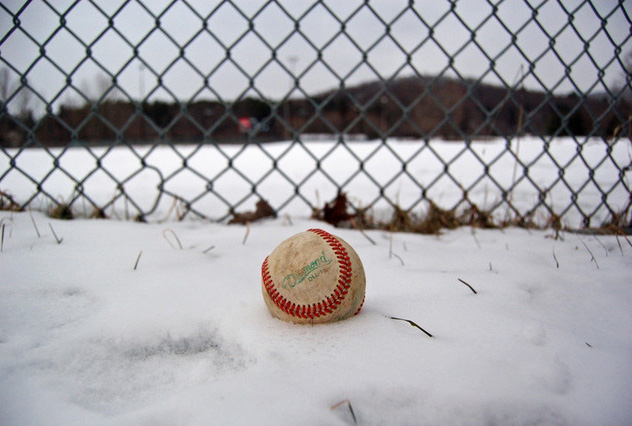
Instead of warmer temperatures and sunshine earlier this spring, Mother Nature taught the majority of the country a new vocabulary word – "polar vortex".
Waves of arctic air dropped high temperatures 10 to 20 degrees below average across the United States, and subzero temperatures were recorded in parts of 26 states in March. Record lows were also set in several southeastern states, including Alabama, Florida, Georgia, Kentucky, Louisiana, Mississippi and North Carolina.
Also known as the Siberian Express (the suspected origin of the air mass), the polar vortex shattered 647 record lows across the U.S.
For years, there have been a few voices calling for a change to the season to late spring/early summer. After the coldest early spring (by far) since college baseball’s common start date in 2007, those voices are getting a little louder.
Minnesota head coach John Anderson proposed the idea a few years ago for the Big Ten alone, believing that it would be the best move for the conference even if its schools would’ve essentially been eliminated from consideration for NCAA Regionals and ultimately the College World Series.
Recently, West Virginia head coach Randy Mazey has come up with his own proposal for pushing back the college season.
"The fan interest is so minimal compared to Major League Baseball,” Mazey said of the college game in a recent D1baseball.com podcast. “[We’re] not even on the radar; the interest in lower levels of minor league baseball is better than the highest levels of college baseball.”
Mazey’s proposal would make the college season look much more like a professional one – with pitchers and catchers beginning training in mid-February, hitters starting around the second week of March, and opening day penciled in for the first week of April. The proposal is even complete with a “rivalry week” during July 4th weekend to finish the regular season.
Mazey is also interested in adding a week of (much-needed) rest before postseason conference tournaments. The College World Series would then start in the first week of August, with the championship round falling just after the LLWS Championship.
Playing in warmer climates could also help prevent injuries in the sport, and student-athletes would miss fewer classes in the spring semester and have an opportunity to earn more credits through summer courses.
Beginning the season later in the year would enable more programs to actually practice outside on baseball fields, a concept that is currently foreign to many schools. “… Imagine if a basketball or football coach never got to practice on a real field or court prior to their first game,” Mazey asks. “If their receivers never got to catch passes like our outfielders don’t get to catch a fly ball? Can you say, ‘uproar?’ When we are all trying to win every game we can to get a shot at the postseason, every game counts, so if you get off to a bad start, it makes a real difference when it comes to at-large bids.”
“If you told a basketball team you can practice on a regular-sized court three times prior to playing your first game, they would look at you like you have four heads,” Pittsburgh head coach Joe Jordano said in an interview earlier this year. “But in baseball, especially northern baseball, that's our reality.”
While moving the season might make some sense on the surface, there are several issues that would have to be addressed along the way. For one, there would be significant costs associated with keeping baseball teams on campus throughout the summer. Class credits need to be paid for, as well as room and board for all 35 student-athletes and any other student managers or trainers. Schools would have to come up with this funding for scholarship players. Since the majority of baseball student-athletes aren't getting a "full ride" scholarship, some of the financial burden could shift to the student-athletes.
The proposal would surely need the endorsement of Major League Baseball, which would be forced to move its draft from early June to later in the summer.
Other potential issues could include disruption of some players' internships and summer jobs. Some of the increased costs could be offset by a savings in travel costs and additional ticket revenue. However, it is unclear if the majority of the 301 Division I baseball programs would significantly benefit.
Does moving the season make sense?